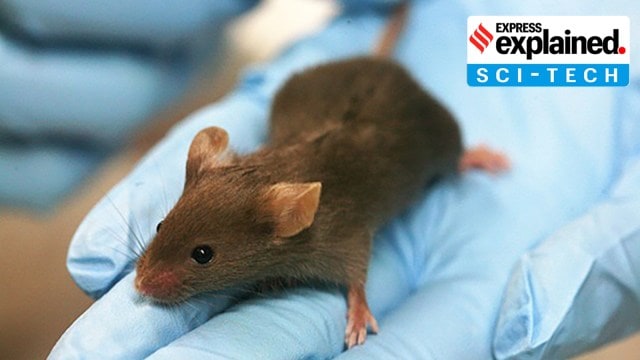Explained: How mice learn to suppress fear, implications of this finding
The findings can have implications for developing treatments to benefit people who struggle with fear-related disorders, including phobias, anxiety and post-traumatic stress disorder (PTSD).
 Over the years, scientists, while studying learning and memory in mice, have focused on examining the visual cortex. (Image source: Wikimedia Commons)
Over the years, scientists, while studying learning and memory in mice, have focused on examining the visual cortex. (Image source: Wikimedia Commons)A team of scientists has determined how the brain of a mouse overcomes instinctive fear, according to the findings of a new study.
The findings can have implications for developing treatments to benefit people who struggle with fear-related disorders, including phobias, anxiety and post-traumatic stress disorder (PTSD).
There are two regions in the brain that work together to learn to suppress responses to perceived threats that prove harmless over time, the analysis has revealed. The study, ‘Overwriting an instinct: Visual cortex instructs learning to suppress fear responses’, was published in the journal Science on February 6. It was carried out by researchers based at the University College London (the United Kingdom).
Sara Mederos, a neuroscientist at University College London who led the study, told The Washington Post, “We have uncovered the mechanism by which the brain — through experience — can understand which potential instinctive dangers are actually not a danger.”
How was the study carried out?
In a laboratory experiment, the researchers exposed 100 mice to a repeated visual threat that proved harmless over time — in this case, an expanding dark circle that imitated a swooping bird.
To teach the mice that the dark circle was not dangerous, the researchers introduced a barrier to prevent the mice from hiding.
“Initially, the mice ran for shelter when the ominous shadow [of the bird] appeared, as their classic instinctive fear response kicked in. But after 30 to 50 simulated swoops, the scientists observed something: The mice came to realise the threat was harmless and learned to suppress their instinct,” the Washington Post report said.
Once that happened, the mice stopped paying attention to the dark circle and continued to forage and explore as usual.
Researchers had also inserted silicon probes into the brains of mice, and used them to track the mammal’s neural mechanisms as they learnt to suppress their instinctive fear.
What did it observe about mice behaviour?
According to the study, two brain areas were involved in helping the mice learn to distinguish the lack of threat.
One was the visual cortex, which processes visual information. This region played a role in learning to suppress the fear reaction. The other region was the ventrolateral geniculate nucleus (vLGN), where the brain stores memories to disregard instinctive fears.
Over the years, scientists, while studying learning and memory in mice, have focused on examining the visual cortex. However, they did not quite explore the vLGN.
This area is located “between the neocortex, which detects a threat, and the brain stem, which activates the body’s instinctive response,” the Washington Post report said.
This is the first time that scientists have realised that the vLGN plays a role in recalling a learnt behaviour.
The researchers hope that one day, they will be able to develop drugs targeted specifically to the vLGN, helping humans deal with anxiety or PTSD.
“Targeting brain areas like the ventrolateral geniculate nucleus could open up new avenues to treat these disorders,” Mederos told Washington Post.
- 01
- 02
- 03
- 04
- 05






































